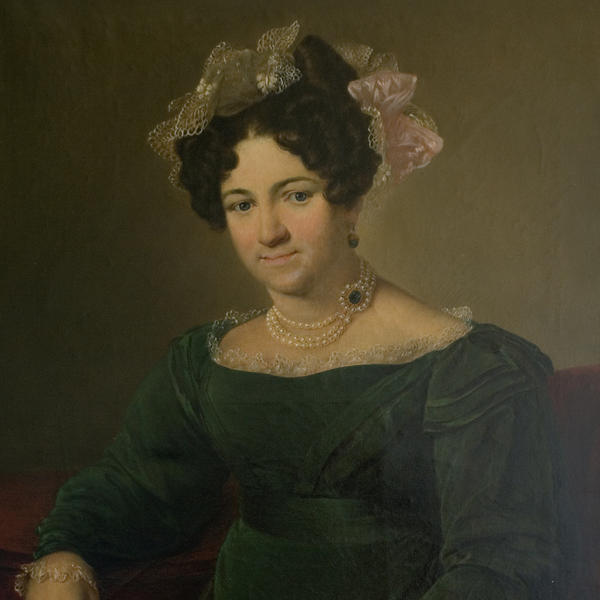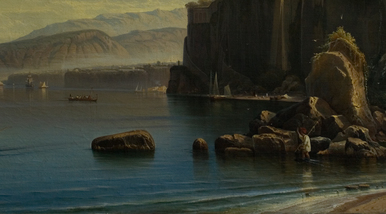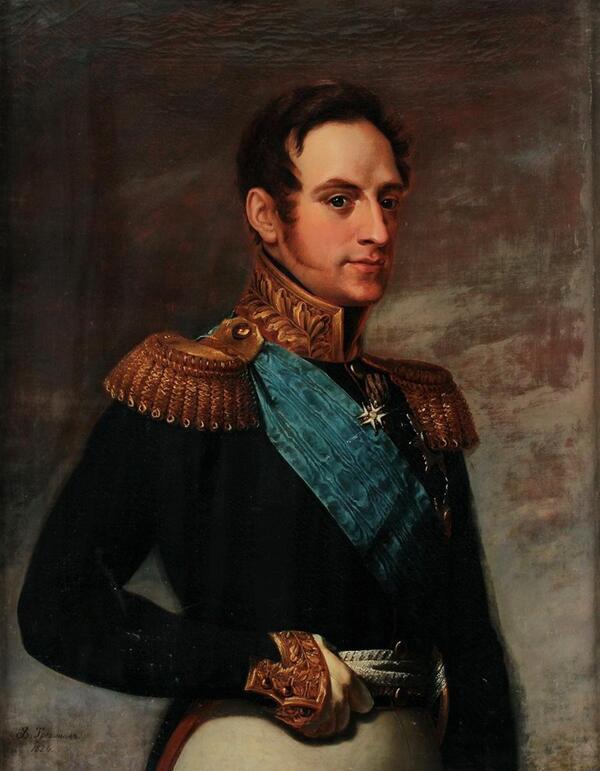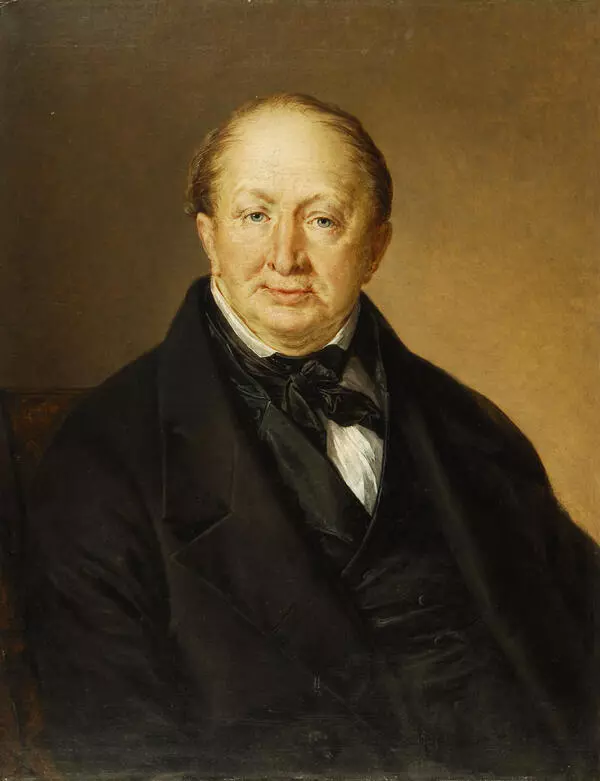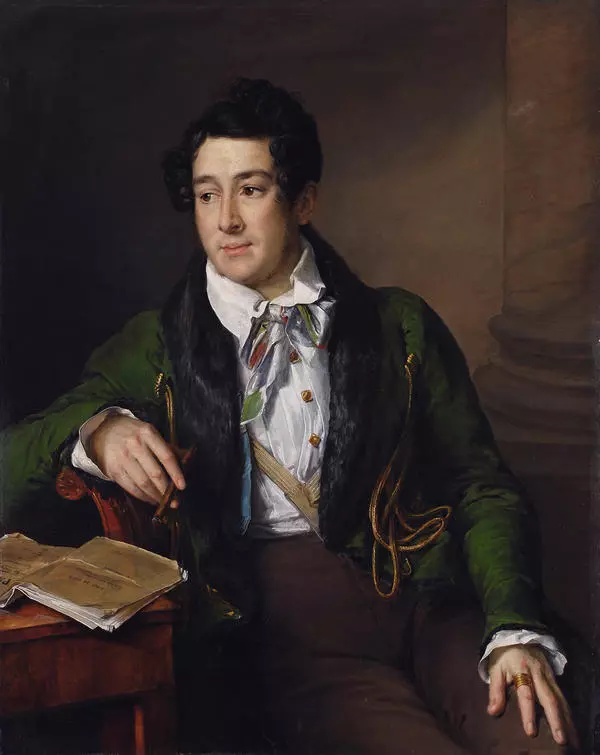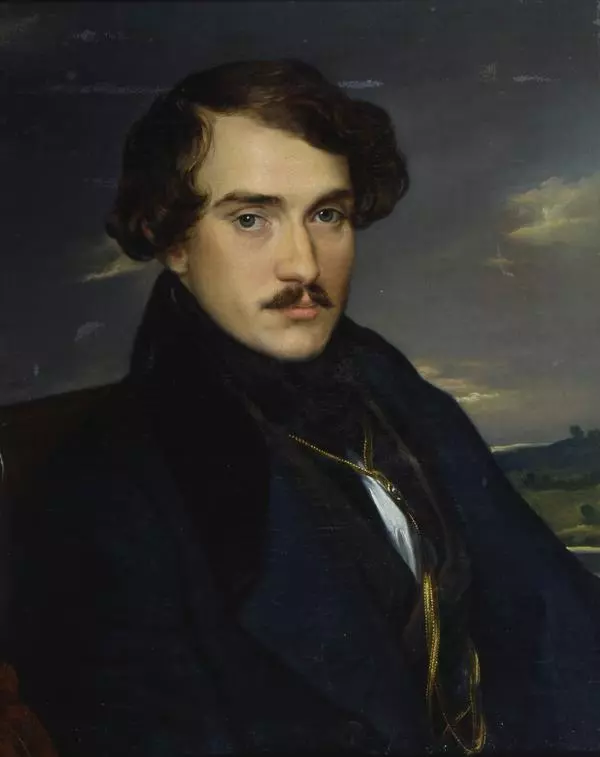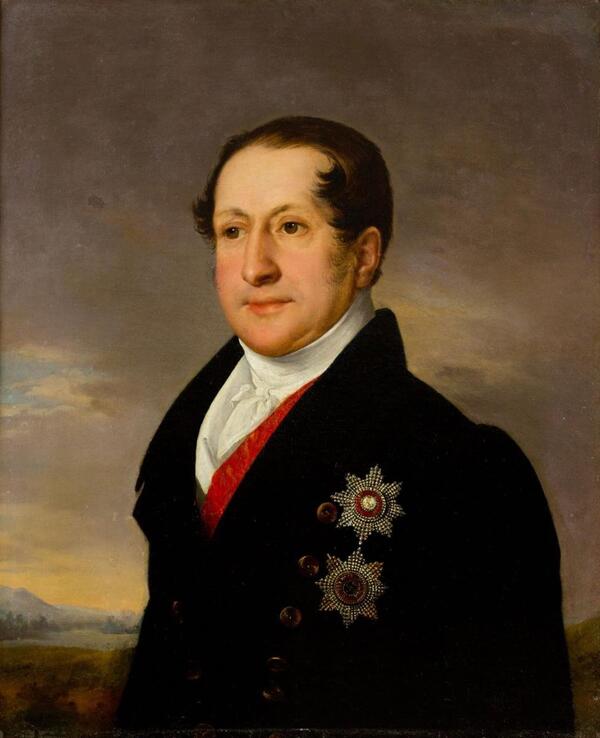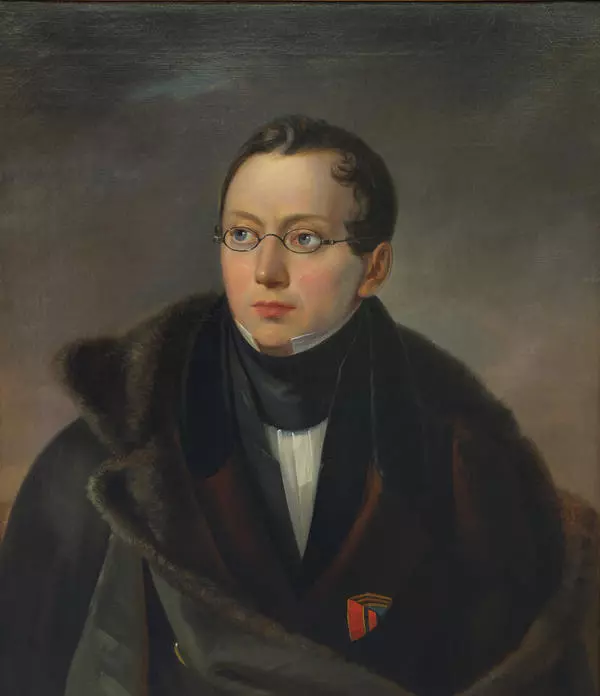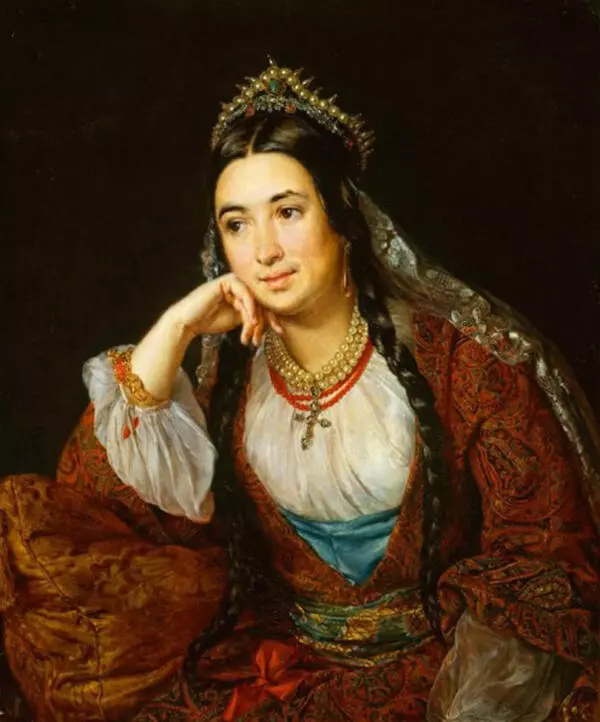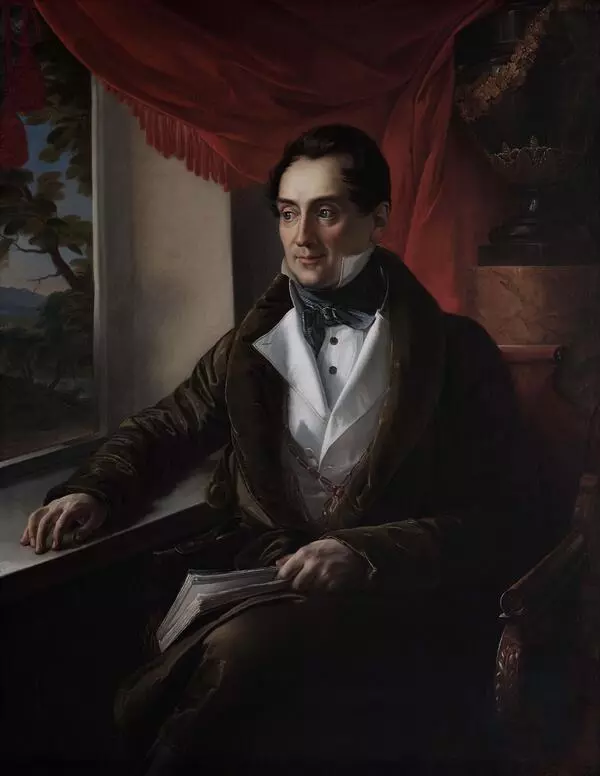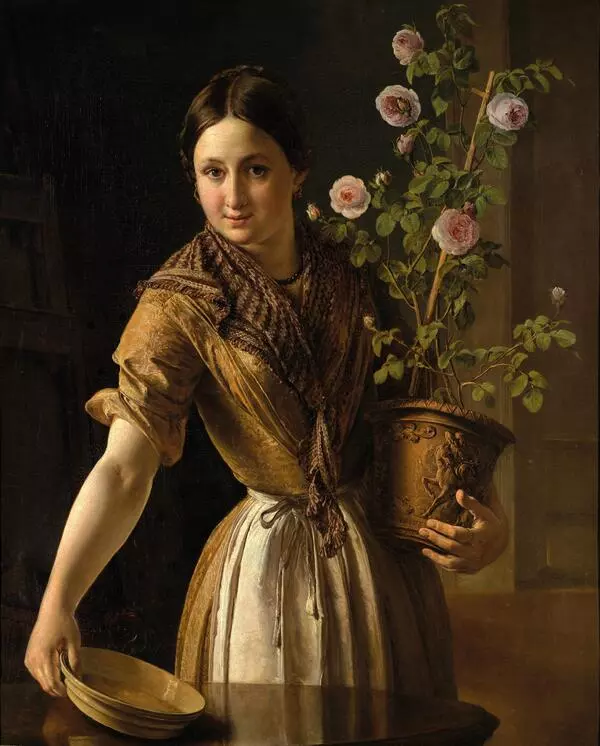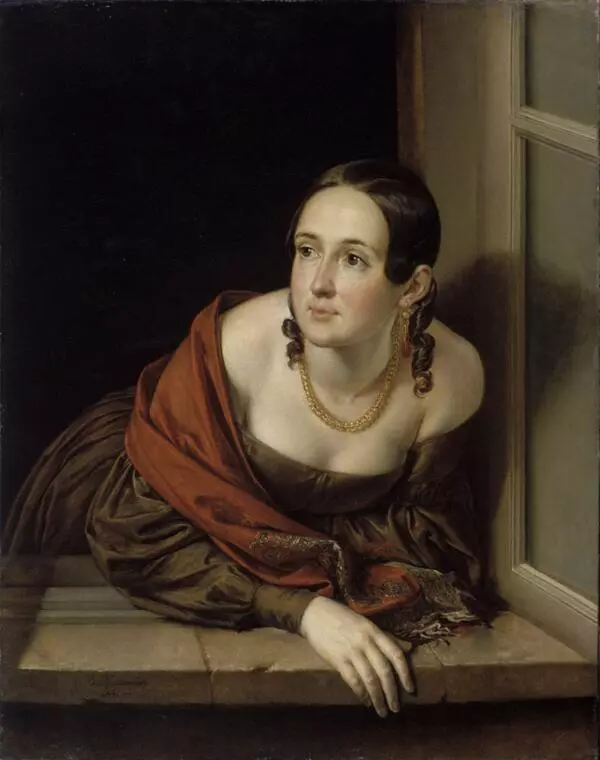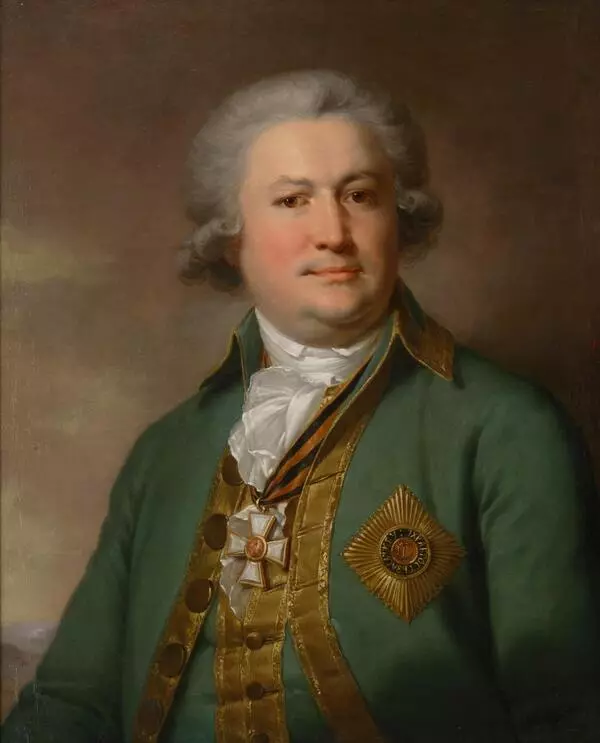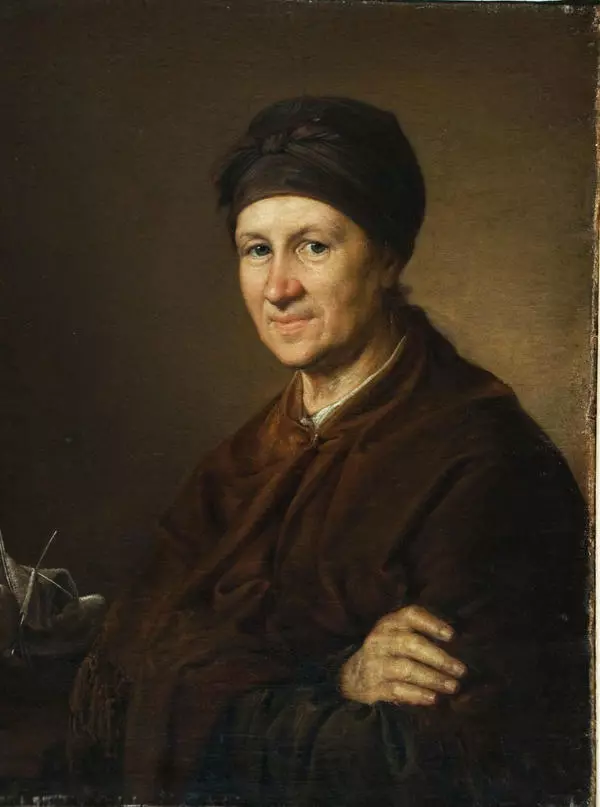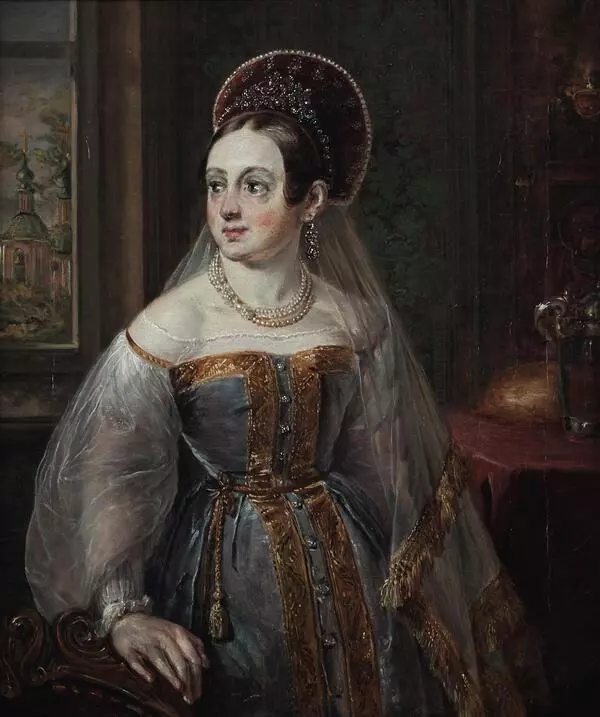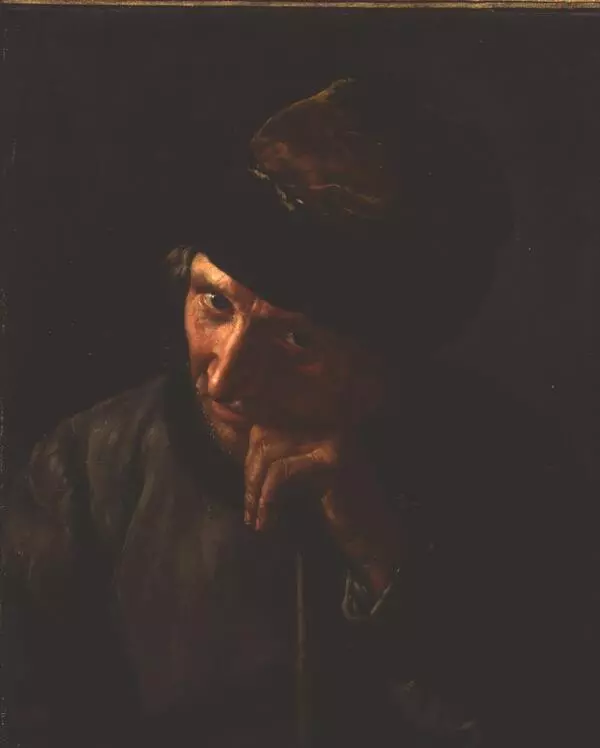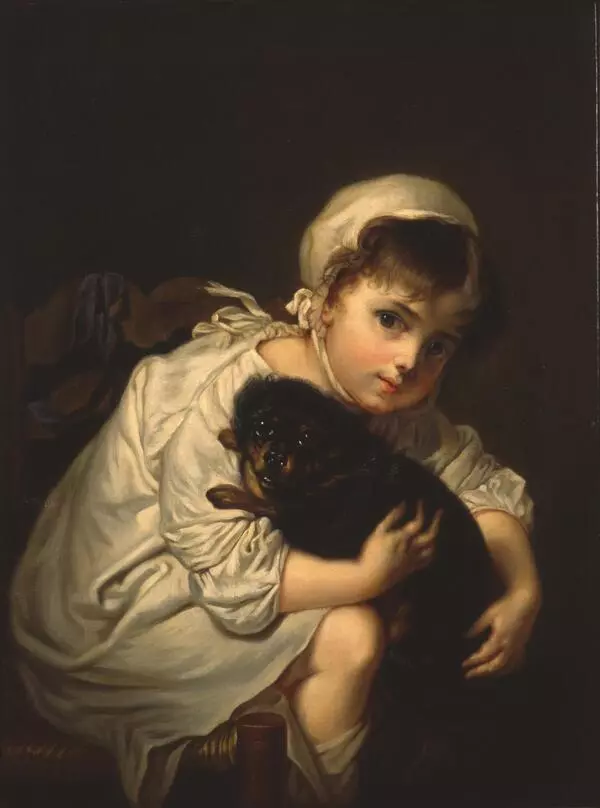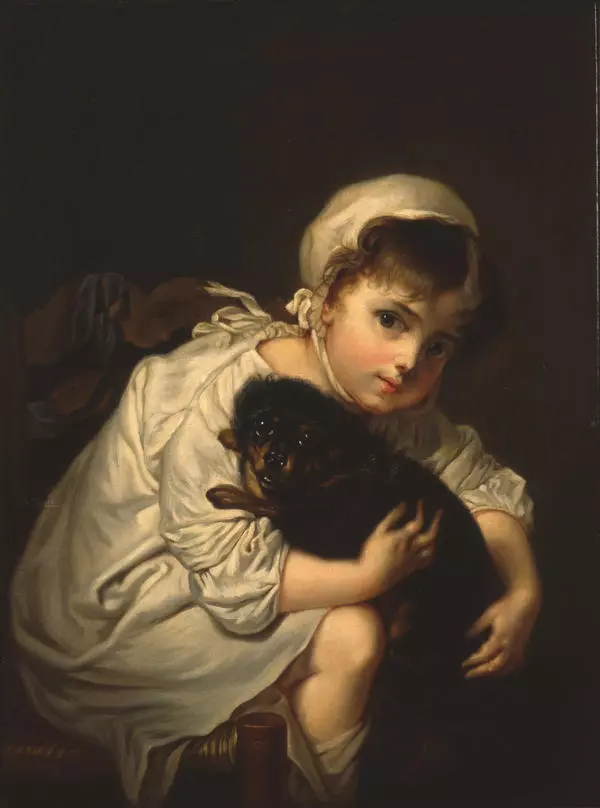Vasily Tropinin’s artwork highlights a slow transition process from the 18th to the 19th century. Tropinin was Count Irakly Morkov’s serf painter and through the fault of his master failed to finish his artistic education at the Imperial Academy of Arts. Later in his life, after getting the manumisiion charter, the artist settled in Moscow and soon became one of Russia’s most popular portrait painters in high demand.
Portrait of P.I. Sapozhnikova
Время создания
1826
Размер
87x67 cm
Техника
oil on canvas
5
Открыть в приложении#3
Vasily Tropinin
Portrait of P.I. Sapozhnikova
#2
#4
At the time, the Otechestvenny Zapiski (National Bulletin) publication praised his paintings saying that:
“Tropinin, Count Morkov”s serf studied painting at the Academy of Arts and is endowed with a delightful gift and inclination to painting. His color palette is reminiscent of Titian”.
#5
Having learnt that Troponin was a serf, many enlightened persons started a campaign demanding that Morkov set the talented painter free. However, the Count was very reluctant to release his serf and Tropinin did not gain the rights of a free man until he was forty seven years of age.
The style of Vasily Tropinin’s portraits is that of sentimentalism. The artist portrayed his models in the prime of life seeking to show their beauty and demonstrate moral virtues. He usually chose home environment for his models where a person would feel most comfortable and hence, look natural and relaxed.
Tropinin painted the portrait of Pelageya Sapozhnikova in 1826 in a period of his creative upsurge. Sapozhnikova (maiden name, Rostovtseva) originally came from the merchant class, but at the time the portrait was made, she already was a member of nobility in the first generation.
The painting composition is simple. The female character sits serenely with her elbow leaning against a small table. She looks natural, uninhibited, and self-controlled. The figure is elegant and dignified. The painter depicted Sapozhnikova in a velvet dress of deep green color adorned with transparent lace. The woman wears a pearl necklace with an emerald insert and acorn-shaped emerald ear rings. Her hair arranged in locks is decorated by lacy ribbons.
This portrait is characteristic of Tropinin’s style of the 1820s and 1830s: a saturated color palette, free manner of painting, and a lyrical image of the female character.
The painter’s original intent was to exhibit the portrait together with that of Sapozhnikova’s spouse, merchant of the first guild Alexander Sapozhnikov. The Sapozhnikovs were well-established Astrakhan traders and owners of a fishing business. The family was very well off, which enabled them to gather a rich art collection. Among other things, their collection contained the famous canvas by Leonardo da Vinci Madonna of the Flower, which Leonty and Maria Benois (maiden name, Sapozhnikova) donated to the Hermitage Museum in 1914.
The style of Vasily Tropinin’s portraits is that of sentimentalism. The artist portrayed his models in the prime of life seeking to show their beauty and demonstrate moral virtues. He usually chose home environment for his models where a person would feel most comfortable and hence, look natural and relaxed.
Tropinin painted the portrait of Pelageya Sapozhnikova in 1826 in a period of his creative upsurge. Sapozhnikova (maiden name, Rostovtseva) originally came from the merchant class, but at the time the portrait was made, she already was a member of nobility in the first generation.
The painting composition is simple. The female character sits serenely with her elbow leaning against a small table. She looks natural, uninhibited, and self-controlled. The figure is elegant and dignified. The painter depicted Sapozhnikova in a velvet dress of deep green color adorned with transparent lace. The woman wears a pearl necklace with an emerald insert and acorn-shaped emerald ear rings. Her hair arranged in locks is decorated by lacy ribbons.
This portrait is characteristic of Tropinin’s style of the 1820s and 1830s: a saturated color palette, free manner of painting, and a lyrical image of the female character.
The painter’s original intent was to exhibit the portrait together with that of Sapozhnikova’s spouse, merchant of the first guild Alexander Sapozhnikov. The Sapozhnikovs were well-established Astrakhan traders and owners of a fishing business. The family was very well off, which enabled them to gather a rich art collection. Among other things, their collection contained the famous canvas by Leonardo da Vinci Madonna of the Flower, which Leonty and Maria Benois (maiden name, Sapozhnikova) donated to the Hermitage Museum in 1914.
#6
P.M. Dogadin Astrakhan Art Gallery
читать дальшескрыть
00:00
00:00
1x
Portrait of P.I. Sapozhnikova
Время создания
1826
Размер
87x67 cm
Техника
oil on canvas
5
Открыть в приложении
Поделиться

